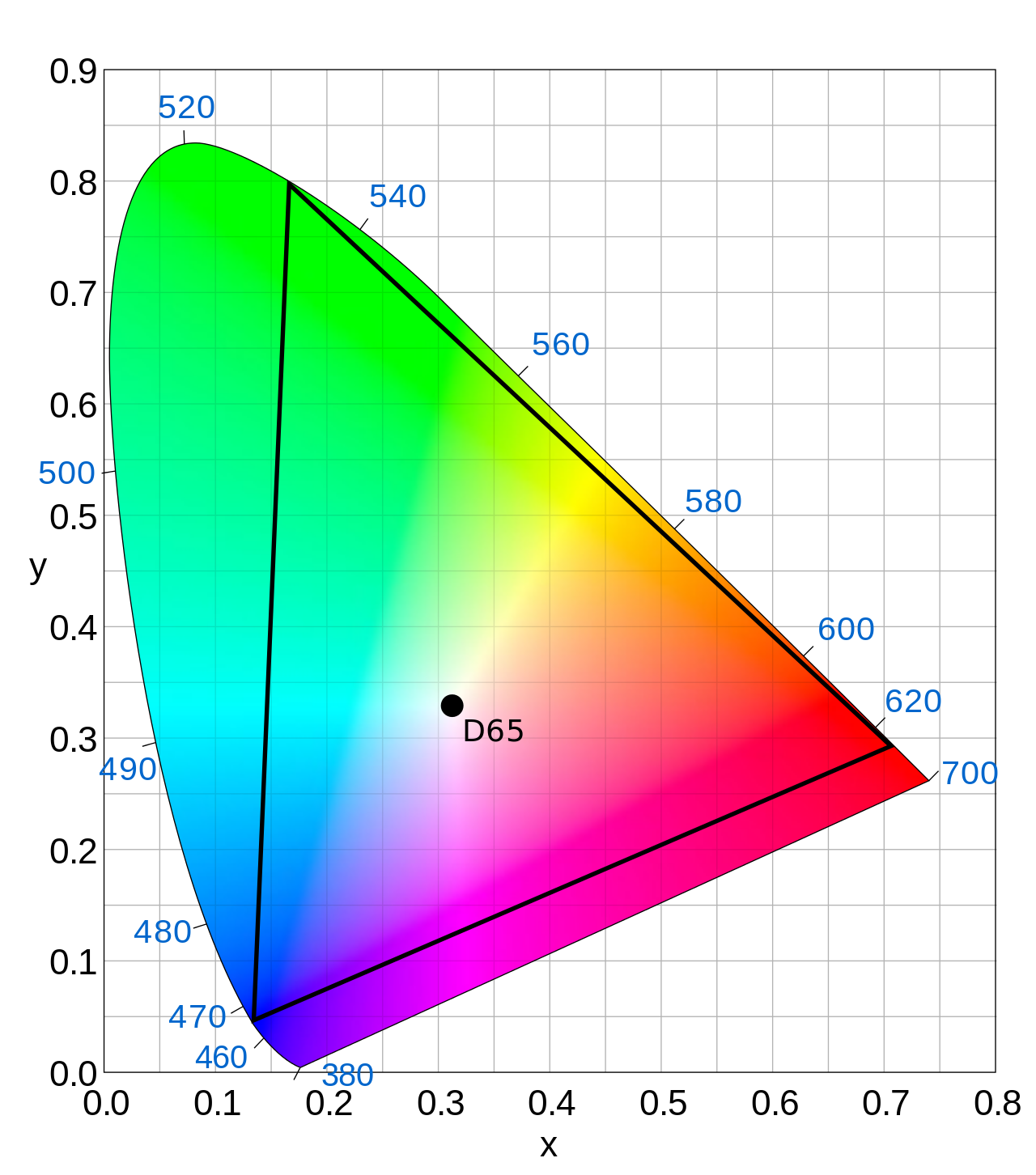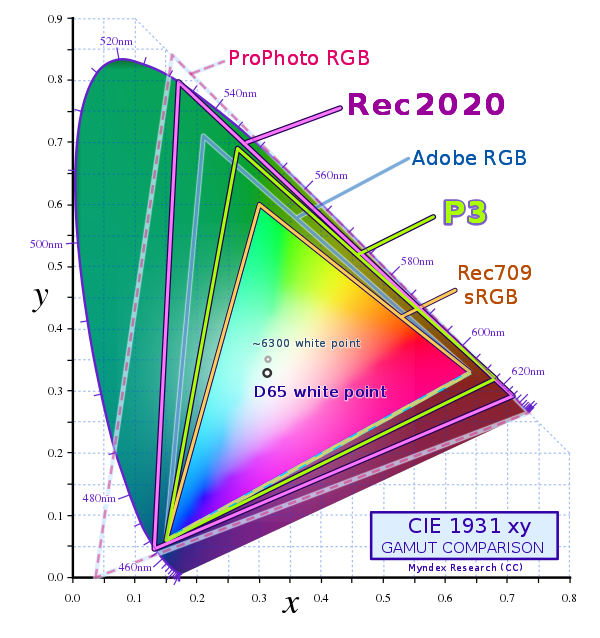BT.2020 / Rec.2020
also known as BT.2020, Rec. 2020
CIE 1931 Chromaticity diagram showing the Rec. 2020 (UHDTV) color space in the triangle and the location of the primary colors. Rec. 2020 uses Illuminant D65 for the white point.
Description
ITU-R Recommendation BT.2020, more commonly known by the abbreviations Rec. 2020 or BT.2020, defines various aspects of ultra-high-definition television (UHDTV) with standard dynamic range (SDR) and wide color gamut (WCG), including picture resolutions, frame rates with progressive scan, bit depths, color primaries, RGB and luma-chroma color representations, chroma subsamplings, and an opto-electronic transfer function. The first version of Rec. 2020 was posted on the International Telecommunication Union (ITU) website on August 23, 2012, and two further editions have been published since then.
Rec. 2020 is extended for high-dynamic-range (HDR) by Rec. 2100, which uses the same color primaries as Rec. 2020.
Technical details
This is a CIE 1931 Chromaticity diagram, overlaid with outlines of the color gamuts of sRGB, DCI-P3, Rec2020, AdobeRGB, and ProPhoto. Actual colors are only shown for the SRGB gamut; the remainder of the Chromaticity diagram has colors dimmed to indicate they are not representable on a standard monitor.
Resolution
Rec. 2020 defines two standard image formats:
3840 × 2160 ("4K")
7680 × 4320 ("8K").
These both have an aspect ratio of 16:9 and use square pixels.
Frame rate
Rec. 2020 specifies the following frame rates:
120p, 119.88p
100p
60p, 59.94p
50p
30p, 29.97p
25p
24p, 23.976p.
Only progressive scan frame rates are allowed.
Digital representation
Rec. 2020 defines a bit depth of either 10 bits per sample or 12 bits per sample.
10 bits per sample Rec. 2020 uses video levels where the black level is defined as code 64 and the nominal peak is defined as code 940. Codes 0–3 and 1020–1023 are used for the timing reference. Codes 4 through 63 provide video data below the black level while codes 941 through 1019 provide video data above the nominal peak.
12 bits per sample Rec. 2020 uses video levels where the black level is defined as code 256 and the nominal peak is defined as code 3760. Codes 0–15 and 4080–4095 are used for the timing reference. Codes 16 through 255 provide video data below the black level while codes 3761 through 4079 provide video data above the nominal peak.

